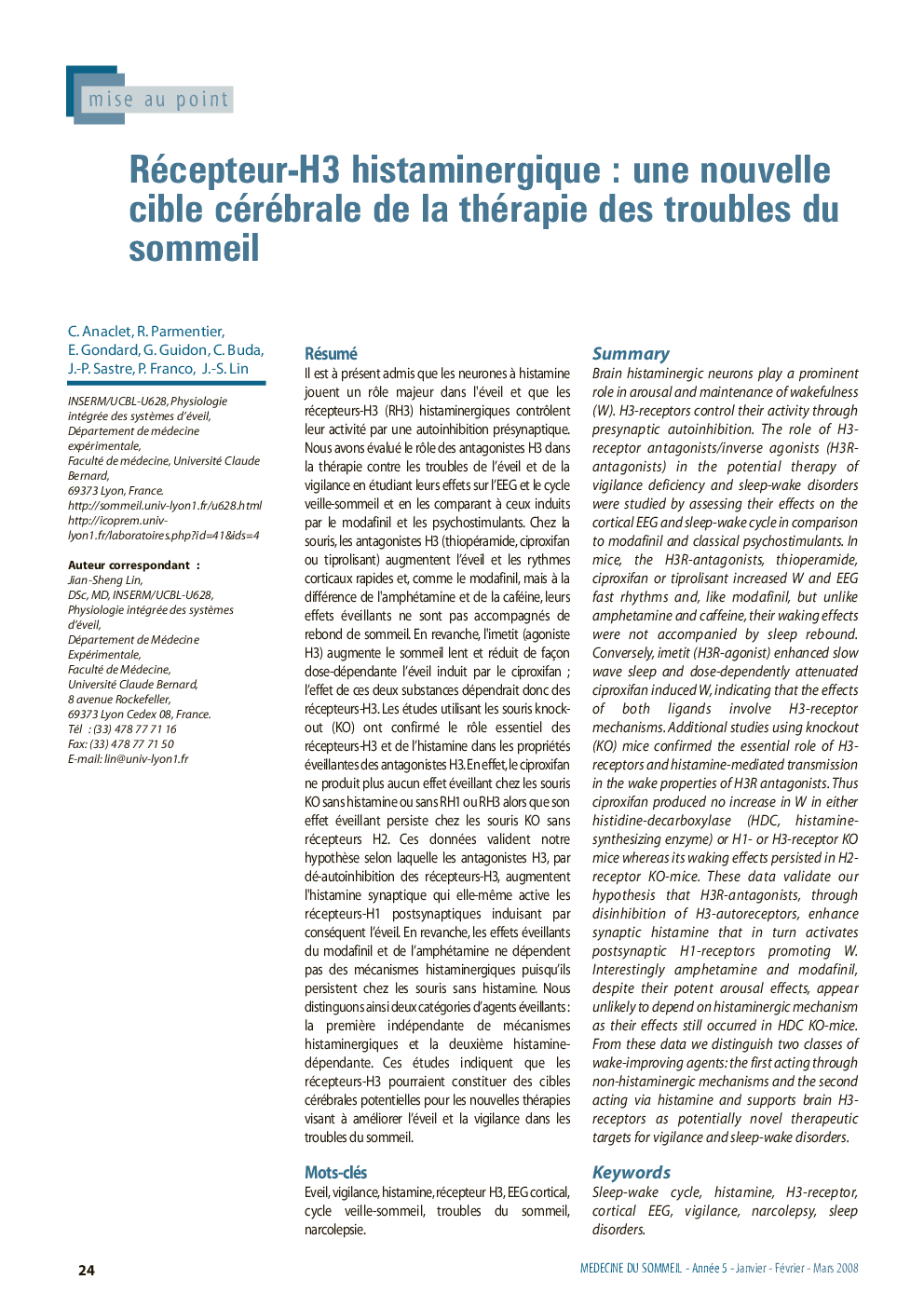| کد مقاله | کد نشریه | سال انتشار | مقاله انگلیسی | نسخه تمام متن |
|---|---|---|---|---|
| 3069124 | 1188268 | 2008 | 8 صفحه PDF | دانلود رایگان |
عنوان انگلیسی مقاله ISI
Récepteur-H3 histaminergique : une nouvelle cible cérébrale de la thérapie des troubles du sommeil
دانلود مقاله + سفارش ترجمه
دانلود مقاله ISI انگلیسی
رایگان برای ایرانیان
کلمات کلیدی
موضوعات مرتبط
علوم پزشکی و سلامت
پزشکی و دندانپزشکی
مغز و اعصاب بالینی
پیش نمایش صفحه اول مقاله

چکیده انگلیسی
Brain histaminergic neurons play a prominent role in arousal and maintenance of wakefulness (W). H3-receptors control their activity through presynaptic autoinhibition. The role of H3- receptor antagonists/inverse agonists (H3Rantagonists) in the potential therapy of vigilance deficiency and sleep-wake disorders were studied by assessing their effects on the cortical EEG and sleep-wake cycle in comparison to modafinil and classical psychostimulants. In mice, the H3R-antagonists, thioperamide, ciproxifan or tiprolisant increased W and EEG fast rhythms and, like modafinil, but unlike amphetamine and caffeine, their waking effects were not accompanied by sleep rebound. Conversely, imetit (H3R-agonist) enhanced slow wave sleep and dose-dependently attenuated ciproxifan induced W, indicating that the effects of both ligands involve H3-receptor mechanisms. Additional studies using knockout (KO) mice confirmed the essential role of H3- receptors and histamine-mediated transmission in the wake properties of H3R antagonists. Thus ciproxifan produced no increase in W in either histidine-decarboxylase (HDC, histaminesynthesizing enzyme) or H1- or H3-receptor KO mice whereas its waking effects persisted in H2- receptor KO-mice. These data validate our hypothesis that H3R-antagonists, through disinhibition of H3-autoreceptors, enhance synaptic histamine that in turn activates postsynaptic H1-receptors promoting W. Interestingly amphetamine and modafinil, despite their potent arousal effects, appear unlikely to depend on histaminergic mechanism as their effects still occurred in HDC KO-mice. From these data we distinguish two classes of wake-improving agents: the first acting through non-histaminergic mechanisms and the second acting via histamine and supports brain H3-receptors as potentially novel therapeutic targets for vigilance and sleep-wake disorders.
ناشر
Database: Elsevier - ScienceDirect (ساینس دایرکت)
Journal: Médecine du Sommeil - Volume 5, Issue 15, March 2008, Pages 24-31
Journal: Médecine du Sommeil - Volume 5, Issue 15, March 2008, Pages 24-31
نویسندگان
C. Anaclet, R. Parmentier, E. Gondard, G. Guidon, C. Buda, J.-P. Sastre, P. Franco, J.-S. Lin,